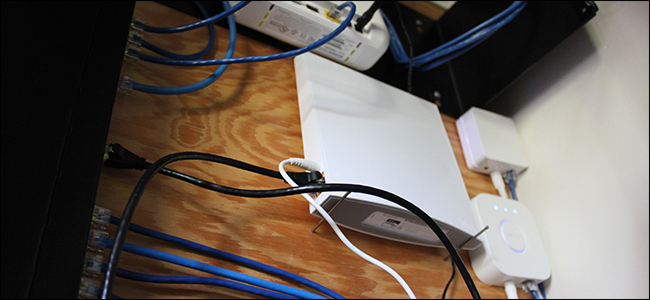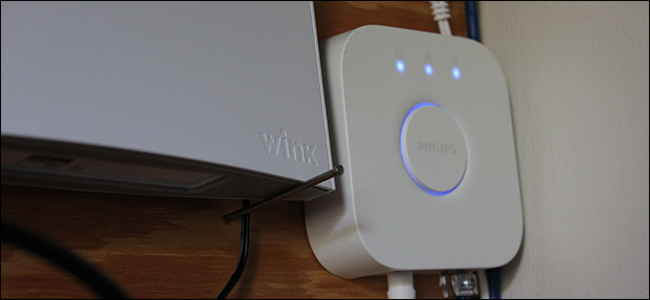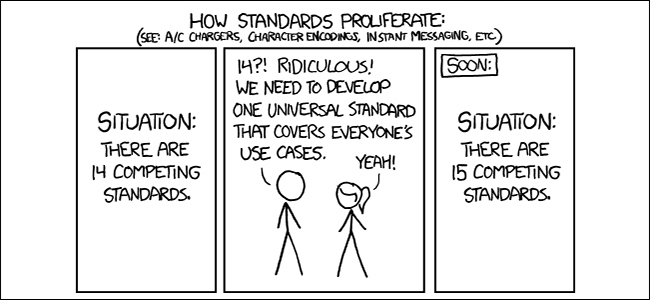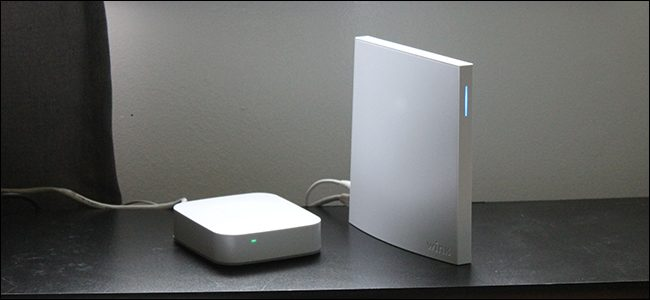
米家智能家居经常离线

A hub for this and a hub for that. When you dive into the smarthome market, you’re inevitably going to end up with a handful of smarthome hubs taking over your house. It’s annoying, but it’s probably not going to get any better.
为此的中心和为此的中心。 当您进入智能家居市场时,不可避免地会以少数几个智能家居集线器接管您的房屋。 这很烦人,但可能不会变得更好。
Don’t get me wrong; these hubs are an important component to any smart home and they have purpose. They make it a lot easier to manage a ton of devices when you end up having a sensor for every door and window, and a smart light switch in every room. But it gets a little ridiculous when so many smarthome products not only require a hub to function, but require their own proprietary hub.
不要误会我的意思; 这些集线器是任何智能家居的重要组成部分,它们都有其用途。 当您最终为每个门和窗户都装有传感器以及每个房间都有智能照明开关时,它们使管理大量设备变得容易得多。 但是,当如此多的智能家居产品不仅需要集线器才能运行,还需要自己的专有集线器时,这将变得有点荒谬。
有商定的无线标准,但没关系 (There Are Agreed-Upon Wireless Standards, but It Doesn’t Matter)

While some companies do create their own wireless protocol, it’s not a super widespread practice. There are agreed-upon standards already in place. Z-Wave and ZigBee are the two most widely-accepted wireless protocols used in the smarthome world, and a huge chunk of smarthome devices use one or the other (or both). This alone should make you believe that connecting smarthome devices together is pretty straightforward, but that’s far from the truth.
尽管有些公司确实创建了自己的无线协议,但这并不是一种普遍的做法。 已经有已达成共识的标准。 Z-Wave和ZigBee是在智能家居领域中使用最广泛的两种无线协议,并且很大一部分智能家居设备都使用其中一个(或两者)。 仅此一项就应该使您相信将智能家居设备连接在一起非常简单,但这并非事实。
As I mentioned in the past when discussing Z-Wave and ZigBee, many smarthome companies add a bit of their own proprietary nonsense to their products, even if they end up utilizing Z-Wave or ZigBee, which makes it difficult to know if one device will connect to another, even if they use the same exact protocol.
正如我过去在讨论Z-Wave和ZigBee时所提到的那样,即使最终使用Z-Wave或ZigBee,许多智能家居公司也对其产品添加了一些专有的废话,这使得很难知道是否有一种设备即使它们使用完全相同的协议,也将连接到另一个。
For example, this Z-Wave garage door tilt sensor from Monoprice won’t work with the Wink Hub, even though the hub fully supports Z-Wave devices. Why? Who knows.
例如, Monoprice的Z-Wave车库门倾斜传感器无法与Wink集线器一起使用,即使集线器完全支持Z-Wave设备。 为什么? 谁知道。

Furthermore, the ever-popular Philips Hue lighting system uses ZigBee, which numerous smarthome hubs support. Yet Philips requires its own “Hue Bridge” in order to set up and use the bulbs. On top of that, third-party support for other ZigBee smart bulbs is limited. And the same goes for Belkin’s long-gone WeMo Link hub—it used to work with any ZigBee bulb, but eventually was updated to only work with a very small list of pre-approved bulbs.
此外,广受欢迎的Philips Hue照明系统使用ZigBee,许多智能家居集线器都支持ZigBee。 但是,飞利浦需要自己的“色相桥”才能安装和使用灯泡。 最重要的是,第三方对其他ZigBee智能灯泡的支持是有限的。 Belkin久违的WeMo Link集线器也是如此,它曾经与任何ZigBee灯泡一起使用,但最终被更新为仅与极少数预先批准的灯泡一起使用。
I’m sure this is largely due to some of these companies not wanting to put up with any weird inconsistencies when you add third-party devices and mix them in with their own devices, but it’s still pretty frustrating.
我敢肯定,这在很大程度上是由于其中一些公司不想在添加第三方设备并将其与自己的设备混合使用时忍受任何怪异的不一致之处,但这仍然令人沮丧。
每个公司都想垄断市场 (Every Company Wants to Corner the Market)
So why are we in this chaotic mess? Because by making their products proprietary (even though the protocols in use are open), Smarthome companies can lock you into their ecosystem. You already have their hub, so you’re more likely to buy other products from them that work with that hub.
那么,为什么我们会陷入混乱呢? 因为使产品专有(即使使用的协议是开放的),智能家居公司也可以将您锁定在其生态系统中。 您已经有了他们的中心,因此您更有可能从他们那里购买与该中心兼容的其他产品。

Several companies are doing a “great job” at just that, including Insteon. They sell their own smarthome hub, but it only works with devices that they make and sell, which use a proprietary wireless protocol that goes by company’s name. So if you decide to go with Insteon and want to add more door sensors in the future, say goodbye to brands like Monoprice, Aeotec, and Ecolink (all of which make solid Z-Wave devices), and get yourself familiar with Insteon-only sensors.
包括Insteon在内的几家公司正在做“出色的工作”。 他们出售自己的智能家居集线器,但只能与自己生产和销售的设备配合使用,这些设备使用公司名称专有的专有无线协议。 因此,如果您决定使用Insteon并希望将来增加更多的门传感器,请告别Monoprice,Aeotec和Ecolink等品牌(所有这些产品均构成坚固的Z-Wave设备),并让自己熟悉Insteon。传感器。
Now, I’m not saying that there’s anything particularly wrong about having a single, proprietary ecosystem in your entire house. It can be more reliable and easier to manage, for sure, and it’s perhaps the best way to keep smarthome hub clutter to a minimum (more on that in the next section). However, the problem is that should Insteon (or whatever proprietary platform you go with) go out of business, you’d have to replace your entire smarthome setup. Whereas if you had (for example) a Wink Hub with a bunch of third-party devices connected to it, you would just need to get a different hub if Wink were to ever go under.
现在,我并不是说在您的整个房屋中拥有一个专有的生态系统特别有错。 当然,它可以更可靠,更容易管理,这也许是将智能家居集线器混乱降至最低的最佳方法(在下一节中有更多介绍)。 但是,问题在于,如果Insteon(或与之配套的任何专有平台)停产,则必须更换整个智能家居设置。 而如果您拥有(例如)连接了许多第三方设备的Wink集线器,则只要Wink倒台,您只需要使用其他集线器即可。
Plus, if you ever want to expand to more devices in the future, you’ll have limited choices on what you can do if you have a proprietary setup. So keep that in mind.
另外,如果您将来想扩展到更多设备,则在拥有专有设置的情况下只能做有限的选择。 所以记住这一点。
那么如何避免Smarthome Hub混乱呢? (So How Can I Avoid a Smarthome Hub Mess?)
If you want to deck out your house in smarthome gear, it’ll be hard to completely streamline the hub situation. The good news is that there are at least some things you can do to keep your smarthome clutter to a minimum.
如果您想用智能家居设备装饰房屋,则很难完全简化集线器的状况。 好消息是,您至少可以做一些事情以使您的智能家居杂乱程度降至最低。

Namely, it’s a good idea to have one main smarthome hub that you can connect everything to, preferably one that has a huge support list for a large number of devices. But that still means you’ll need to be extra vigilant when you go to buy sensors, light switches, bulbs, and more—you’ll need to make sure that your hub supports them.
就是说,最好有一个可以将所有内容连接到的主要智能家居集线器 ,最好是拥有大量设备支持列表的集线器 。 但这仍然意味着在购买传感器,电灯开关,灯泡等时,您需要格外警惕-您需要确保集线器支持它们。
With that in mind, be careful with some products that say they work with certain smarthome hubs. That’s true and all, but they still may require their own hub. For example, Lutron Caseta light switches can link to the SmartThings hub, but the switches still require their own hub to function—the SmartThings integration is merely for the benefit of controlling the switches from the SmartThings app.
考虑到这一点,请谨慎使用某些与某些智能家居集线器兼容的产品。 没错,但他们仍然可能需要自己的中心。 例如, 路创Caseta照明开关可以链接到SmartThings集线器,但是这些开关仍需要它们自己的集线器才能工作-SmartThings集成仅仅是为了从SmartThings应用程序控制开关而带来的好处。
And that’s another piece of advice to keep in mind. If you want the least number of hubs in your smarthome setup, try to stay away from products that require their own hub no matter what, like Lutron Caseta or Philips Hue. Both of these product lines are fantastic and I personally recommend them, but they require their own hubs. If that’s not your jam, perhaps aim for Z-Wave light switches (like this one from GE), or smart bulbs that don’t need a hub (or that can connect to third-party hubs).
这是要记住的另一条建议。 如果您希望在智能家居设置中使用最少的集线器,请尽量远离需要它们自己的集线器的产品,例如Lutron Caseta或Philips Hue。 这两个产品线都很棒,我个人推荐它们,但是它们需要自己的集线器。 如果那不是您的难题,那么也许瞄准Z-Wave灯开关(如GE的产品 )或不需要集线器 (或可以连接到第三方集线器 )的智能灯泡。
In the end, though, it’s fairly difficult to achieve a perfectly-streamlined smarthome system right now. You can get close, but it does limit your choices.
最后,尽管如此,现在要实现完美简化的智能家居系统还相当困难。 您可以接近,但确实会限制您的选择。
Image from xkcd
图片来自xkcd
翻译自: https://www.howtogeek.com/351650/enough-with-all-the-smarthome-hubs-already/
米家智能家居经常离线





















 1122
1122











 被折叠的 条评论
为什么被折叠?
被折叠的 条评论
为什么被折叠?








